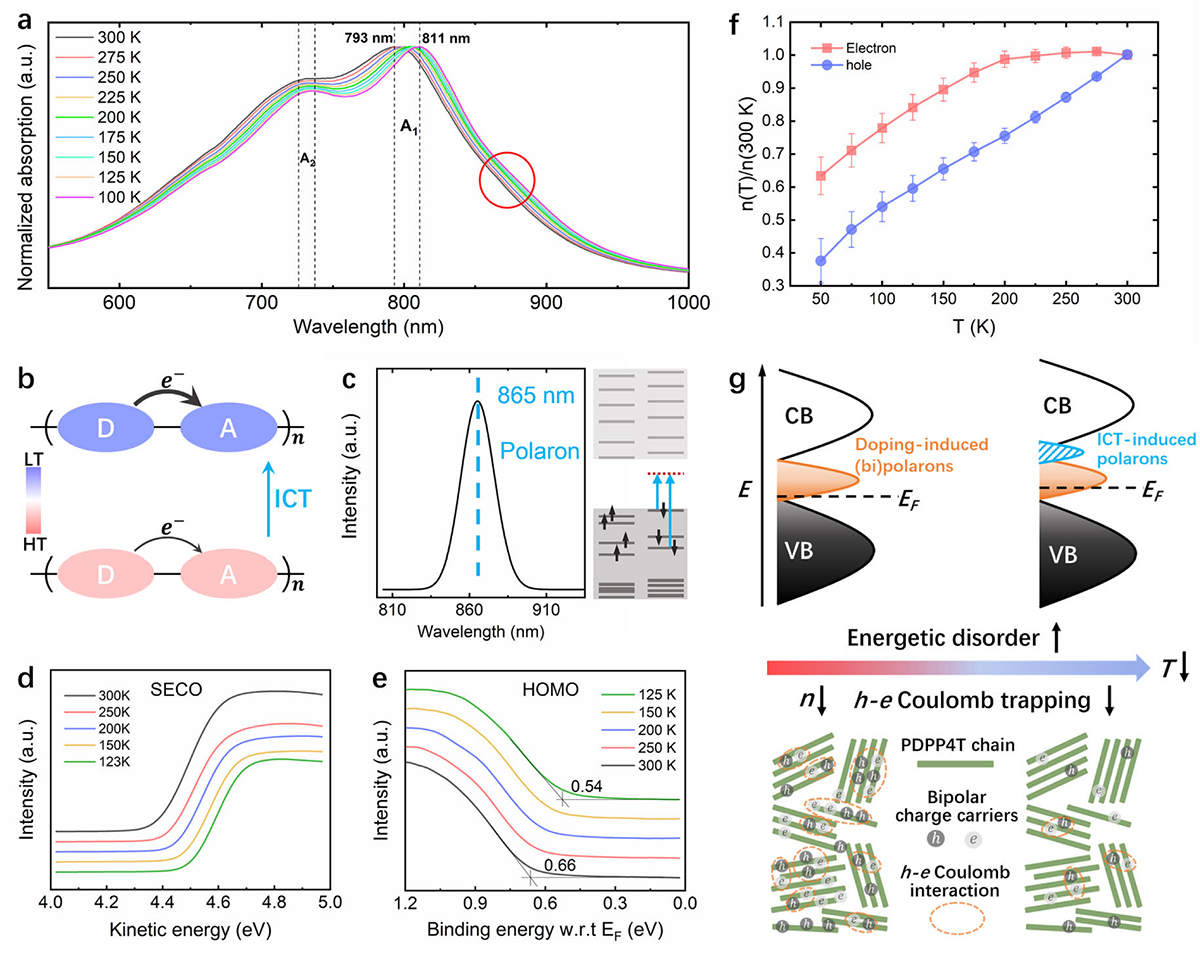Figure 4

Download original image
Mechanism for the revealed nonmonotonic thermopower temperature dependence in bipolar PDPP4T. (a) Variable temperature UV-vis-NIR absorbance of pristine PDPP4T, revealing a redshift for both A1 and A2 peaks, and a rising of the shoulder-peak (~870 nm) at a low temperature as indicated by the circle. (b) Schematic illustration of the enhanced PDPP4T donor-acceptor (D-A) intramolecular charge transfer (ICT) at low temperature, as revealed by the redshift in the absorption spectra. (c) Theoretical calculations attribute the observed rising shoulder peak in (a) at low temperatures to charge transitions to the in-gap polaronic level, as shown in the spin-split orbital energy level diagram and indicated by the blue arrows. Temperature-dependent (d) secondary electron cut-off (SECO) and (e) HOMO region of UPS characterizations for pristine PDPP4T. (f) Temperature-dependent hole and electron Hall carrier concentration in bipolar PDPP4T (40 mmol L−1 FeCl3). The hole/electron concentration at low temperatures n(T) is normalized to their corresponding values at 300 K. (g) Schematic illustration of the collaborative origins of enhanced thermopower at low temperature: the emergence of ICT-induced polaronic states, reduced carrier concentration, and weakened hole-electron carrier-carrier Coulomb interaction.
Current usage metrics show cumulative count of Article Views (full-text article views including HTML views, PDF and ePub downloads, according to the available data) and Abstracts Views on Vision4Press platform.
Data correspond to usage on the plateform after 2015. The current usage metrics is available 48-96 hours after online publication and is updated daily on week days.
Initial download of the metrics may take a while.

